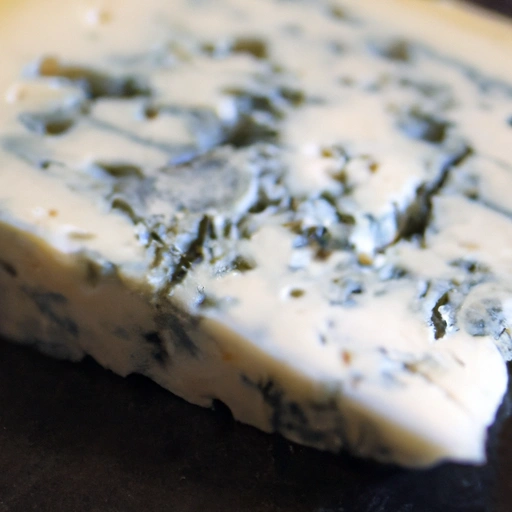Blue Cheese
Description

Blue cheese, known for its distinctive blue or blue-green mold veins and strong aroma, is a category of cheeses that have had cultures of the mold Penicillium added, creating a unique and bold flavor profile. This type of cheese can range from soft and creamy to crumbly in texture, with a sharp and slightly salty taste that intensifies with age. Varieties of blue cheese are enjoyed by gourmets and casual cheese lovers alike, adding a pungent punch to a wide array of dishes.
Common uses
Blue cheese is often featured in salads, dressings, pasta dishes, and on cheese boards. It is also used to create flavorful sauces for meats and vegetables and can be melted into soups or enjoyed simply with a slice of bread or crackers.
Nutritional value
Calories
On average, blue cheese contains about 100 kcal (420 kJ) per 1 oz (28 g) serving.
Protein
Each serving contains approximately 6 g of protein.
Fat
The fat content in blue cheese can be around 8 g per serving, which includes saturated fat.
Carbohydrates
Blue cheese is typically low in carbohydrates, with less than 1 g per serving.
Vitamins
It provides a source of vitamins such as Vitamin A and certain B vitamins.
Minerals
Minerals present include calcium, which can be about 150 mg per serving, and phosphorus.
Health benefits
Blue cheese is a good source of calcium, which is important for bone health. Its protein content also contributes to muscle maintenance and repair. Additionally, blue cheese contains beneficial bacteria that may aid in digestion.
Potential risks
People with a penicillin allergy may need to avoid blue cheese due to the presence of Penicillium mold. It is also high in sodium and saturated fat, which should be consumed in moderation.
Common recipes
Popular recipes with blue cheese include Buffalo wings with blue cheese dip, blue cheese burgers, and pear and blue cheese salad.
Cooking methods
Blue cheese can be melted, crumbled, or served as is, depending on the recipe requirements.
Pairing with other ingredients
It pairs well with sweet fruits like pears and figs, as well as with nuts, honey, and bold red wines.
Summary
Blue cheese is a versatile and flavorful ingredient that can elevate a wide variety of dishes. With its rich history and distinctive taste, blue cheese adds depth to recipes and can be enjoyed in numerous ways, from gourmet sauces to simple snacks. Despite its potential risks for certain individuals, its nutritional benefits make it a valuable addition to a balanced diet.